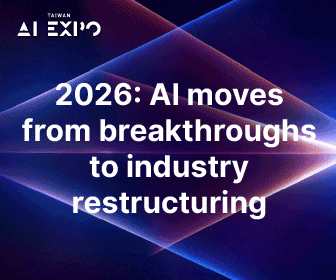Creator economy, defined as the 100+ billion-dollar businesses of independent content creators, has been the pillar of our existing social platforms, generating business opportunities not only for the creator themselves but the employees and partnered brands.
As in our previous article, creator economy is crucial for the operation of metaverse experience and interrelated with other components like avatars, virtual economies, and gaming that can eventually affect startups and mature companies' product development.
In this article, we focus on analyzing how the metaverse can grow creator economy and list the differences in the metaverse version of creator economy vs. the one we are way too familiar with through popular social media apps nowadays.
Key components of the metaverse version of creator economy
For creators, social media and other Web2.0 models offer channels for creators to monetize their content and community engagement. For brands, each creator helps them achieve target marketing that traditional channels couldn't achieve in comparable depth and frequency. But in the metaverse version, the relationship of creator-platform-viewer has more democracy and dynamics, reflected in the autonomy of participants, especially in a "community-directed" metaverse. In metaverse applications, viewers have more rooms to interact with the work of creators or even become creators themselves in a spatial setting as tools develop. For example, Sandbox, one of the most funded virtual gaming metaverse, granted game developers tools to build games, build 3D assets, and sell NFT that creators can share 95% of the sales.
One interesting difference is that compared to current social media, viewers have more opportunities to interact with the creators and even form partnerships in achieving goals as a team, such as playing games and promoting social tokens/digital assets together.

Credit: Andrea Chang
How creators can benefit from metaverse applications
Wider categories of content
Compared to existing platforms, the major difference that metaverse applications can offer is virtual spaces where creators can build their own content, be it virtual lands or virtual buildings, which create a whole new demand for 3D artists. Like what we have mentioned in the previous article on metaverse culture, various types of virtual assets like avatars and digital fashion offer opportunities for new breed creators. Among different categories, we expect infrastructure & content related to music and gaming will show increased demand as the existing platforms have already shown rising tastes for these categories.
We also expect people will spend more time in the metaverse as hardware increases user experiences, which can further benefit non-recreational applications like businesses and education. Microsoft Mesh for Teams, its corporate metaverse, aims to move most of the online meetings to 3D settings in the future.
Less dependency on brand sales
The major reasons for the extremely high dependence on brand deals for creators' income include more flexibility in negotiating the terms, advantages for the mega stars (as luxurious brands cooperating with celebrities have an affluent budget), stringent profit-sharing at most platforms (creators need to reach certain viewers to get the base revenue sharing criteria). However, metaverse applications can change this high dependency as new forms and engagement of activities happen virtually. For example, creators can structure their own in-metaverse economy and have more occasions in selling virtual items to fans.
Higher reward-to-input ratio for creators
According to the recent survey by Linktree in April this year, only 12% of full-time creators are making more than $50,000 per year with 46% of full-time creators making less than $1,000 annually. For example, the latest "badge" on Instagram, which allows supporters of creators' live streaming to buy and unlock additional features, requires creators to have at least 10,000 followers and pay 30% of revenue to Apple App Store. On Youtube, creators with 20,000 monthly views earn around $500 per month, after Youtube charges 45% of ads revenue.
Metaverse version of the creator economy can make creators have more ways to earn money with the wider scope of digital assets and upside of dencentralized metaverse applications that reward content creators with sizable token sharing/ NFT drops.
Implication: Opportunities of decentralized metaverse for creators in Web3.0
One major reason why these centralized social media platforms can charge so high is because of the disproportional percentage of viewers they have in the global market. Even though the platforms charge 30%-50% of revenue sharing, creators have no better options and hence platforms face little competition in lowering the price. Web3 can change the game as most of the early-stage startups issuing tokens now reserve 20%-50% just for ecosystem growth, with a large proportion going to content creators and early community members. Creators owning these tokens are like shareholders of the emerging platforms, hence they shall have more incentives in promoting the services as well as generating content. For example, Web3 platforms like Rally allows creators to design their own social token economies with zero charges, making creators' fans not only supporters of their creativity but also stakeholders of tokens that can enjoy the upside (or share the risk) of the social tokens. In a metaverse setting, the mechanism shall further deepen as the reward of digital assets can expand beyond tokens to virtual lands, NFT arts…etc. Open metaverse such as Decentraland has its own land economy where creators can buy lands, build virtual venues, and rent/sell to others.
The dynamics among creators in a decentralized metaverse can also be different. Unlike the zero-sum game of attention economy on major social platforms, where every creator is in some way contending for viewers' eyeballs, creators on decentralized metaverse platforms ultimately are all stakeholders of the new platform. Hence, we expect there will be more cross-over cooperations that can further increase the variety of content in decentralized metaverse.
While these decentralized metaverse applications, including games, social spaces, and metaverse platforms, are still too early to compete with centralized platforms, we expect collectively they can incentivize creators to move to other platforms in the long term as more choices and benefits emerge. After all, every new wave of technology gives birth to new breeds of consumer applications.
Bio of Andrea Chang:
Chang is a partner at NGC Ventures, which is one of the first and largest institutional investors in crypto since 2018 and a Web3.0 metaverse-focused fund since 2021. She has 5+ years of experience in Crypto investment and Web 3.0 technologies globally. Before crypto and Berkeley Haas MBA, she was at Goldman Sachs global investment research in Singapore and technology VC in the Greater China region.

Andrea Chang, partner at NGC Ventures; Credit: Andrea Chang
Editor's Notes:
The article was originally published in "Metaverse Research," an independent study initiated by Andrea Chang and Jane Lu, as part of their Berkeley Haas MBA program.



